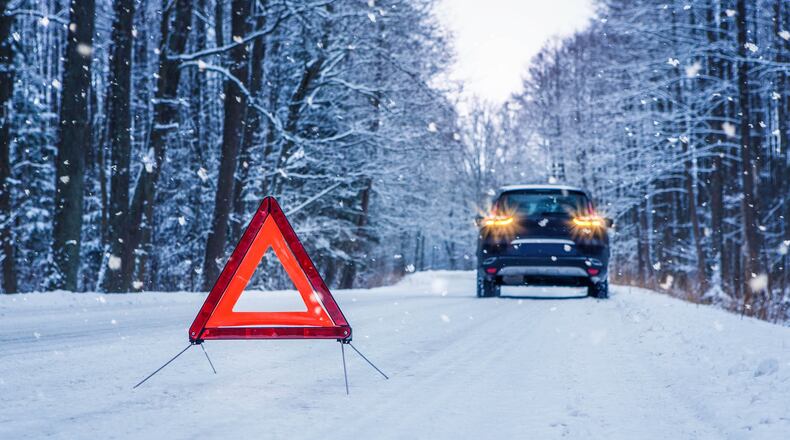Here’s what you should check.
Tires
Nothing else affects your car as much as an under-inflated tire. Cold weather causes tires to lose air pressure; cold air is more condensed than warm air. So, it’s a good idea to check. The proper inflation is posted on the driver’s side front door jamb on newer cars and trucks.
While you’re at it, check the tread. Take a penny and place it upside down into several places across the tire. If the top of Abe Lincoln’s head is showing, replace the tire. Also, check the state of the tread itself. If a tire is worn on both edges, it is under-inflated. If it’s worn in the center of the tread, it’s overinflated. If you spot cups or dips in the tread, have the suspension or steering systems checked.
Finally, most cars are equipped with all-season tires. Sports sedans and sports cars are commonly equipped with summer performance tires for better dry-weather grip, while hybrids and electric vehicles have low-rolling resistance tires (aka lower grip) for better efficiency. Consider replacing them with winter tires or studded snow tires to improve winter traction. However, fuel economy and/or battery life will suffer.
Battery
As the temperature drops, the need for juice rises. Replacing your battery ahead of time is beneficial in two ways: You can buy a new one on sale, and you won’t be left stranded.
Deciding when to replace it is simple. For example, if you have a 36-month battery, you can expect three years of trouble-free charging. As the 36-month mark approaches, consider replacing the battery shy of that point.
Also, have your car’s alternator, voltage regulator, belts and connecting cables checked by a mechanic.
Windshield wipers, washer fluid
If the wipers are streaking, replace them. Also, replace windshield washer fluid that’s been diluted with water with pure washer fluid that won’t freeze below 32 degrees.
Cooling system
If you can’t remember the last time your vehicle’s cooling system was flushed, check your records and your vehicle’s owner’s manual. Flushing the system removes sediment and rust particles to prevent clogging. Be sure to use a 50/50 mix of antifreeze to water. Also, be sure to use the proper antifreeze. Many newer vehicles specify a new, longer-life engine coolant, not the traditional green type. Finally, replace any dried-out, cracked hoses.
Lights
Seeing and being seen is critical in inclement weather. Have someone stand outside the car to ensure all headlights, fog lamps, tail lamps, brake lights, and turn signals work.
Brakes
When roads get slick, stopping distances increase. If your last vehicle check showed your brakes to be marginal, or the brakes squeal when coming to a stop, get them checked and/or replaced.
Defroster
Do all of your defrosters work? This might seem like an insignificant item — until you need it.
Clean your car
Wash your car to remove accumulated grime. Then, polish and wax the paint to preserve the finish. Inside, wipe down all surfaces. For leather, use a leather cleaner and moisturizer to prevent cracking. Clear out the glovebox, center console and rear cargo area. Vacuum the seats, carpet and headliner.
Be prepared
A breakdown, flat tire or other problem can occur at any time.
Pre-assembled emergency and first aid kits are available at auto parts stores, but you might want to build your own if you don’t have one. Be sure to include screwdrivers — Phillips and flathead, pliers, socket wrenches, duct tape, electrical wire tape, electrical wire spray, WD-40, flashlight with extra batteries, coolant hose repair kit, a small fire extinguisher, tire gauge, road flares, spare fuses, foam tire sealant or a portable air compressor, jumper cables, rain gear, work gloves, roadside assistance phone number, and spare fluids.
Also, consider adding kitty litter (for added traction under a slipping tire), a flashlight, work gloves, a small shovel, a windshield scraper, jumper cables, a first aid kit, cloth or paper towels, drinking water, nonperishable snacks and a blanket, in case you get stranded.
One last thought
Taking the time now to ensure your ride is trouble free will ensure that your winter driving experience will be as well.
About the Author
